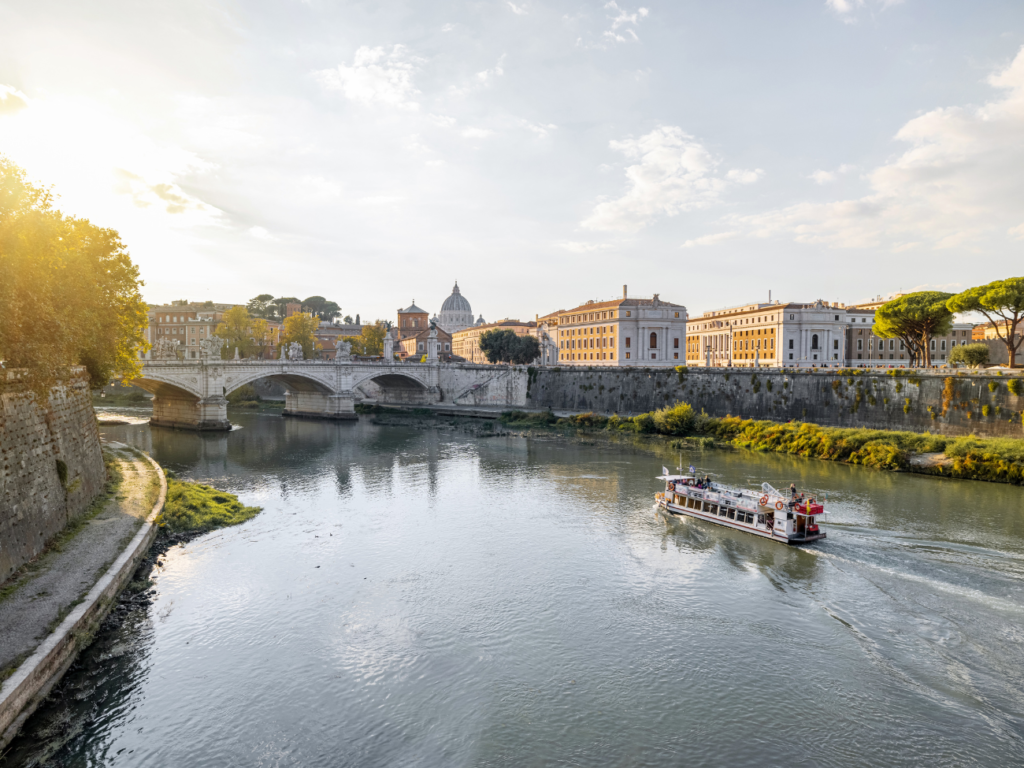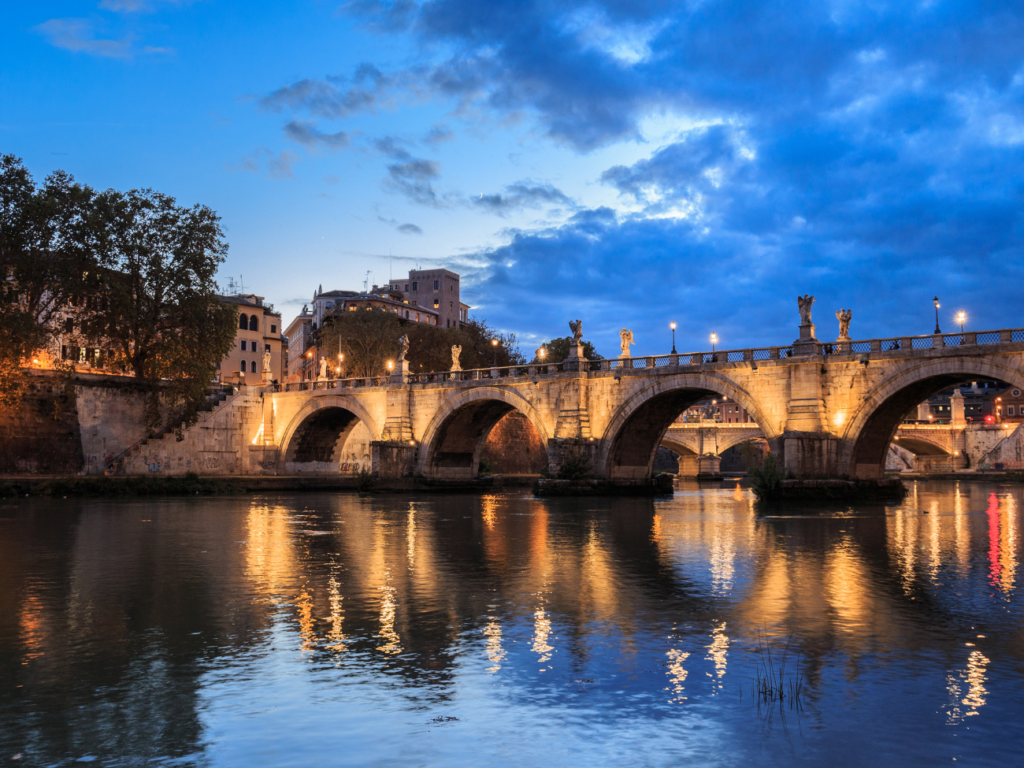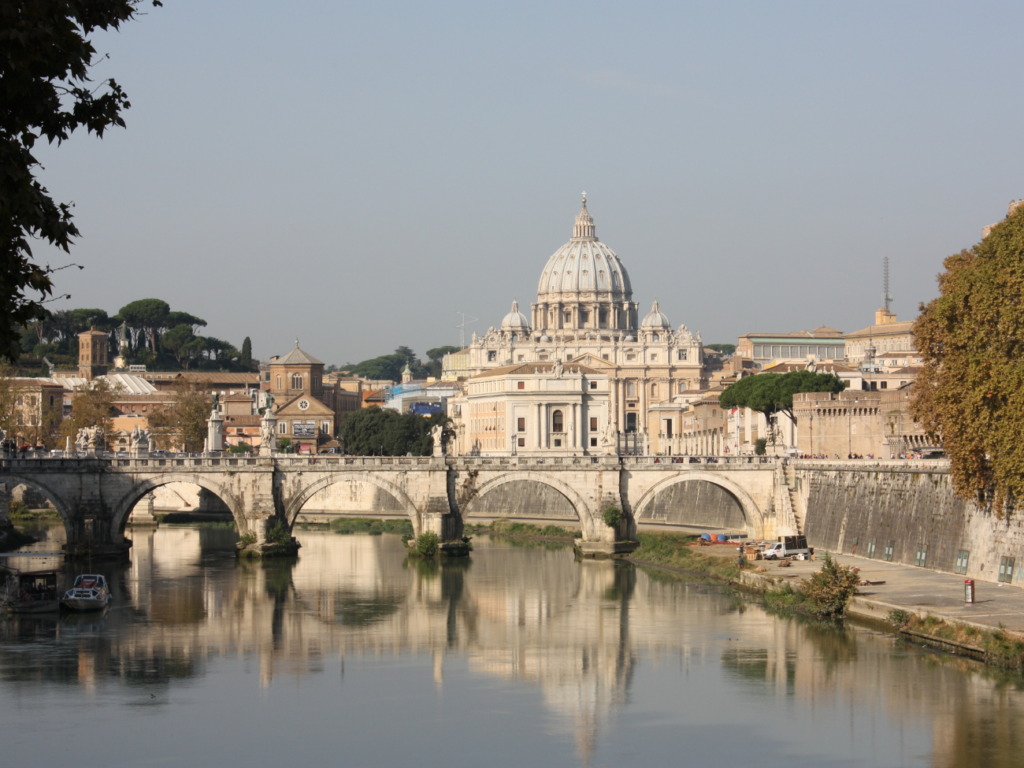The Tiber is the beating heart of Rome, a river which, both in myth and reality, has shaped the history, culture, and development of the eternal city.
Rome and the Tiber, between myth and history…
One of the best-known legends about the river is that of the twins Romulus and Remus: the sons of Rhea Silvia and the god Mars. Romulus and Remus became the founders of the city after they were transported to and abandoned near the Palatine hill, where they were then found by the famous and iconic she-wolf who breastfed and raised them. Later as adults, and after having decided to found Rome, the two brothers did not agree on the location of the foundation site for the city and instead opted to let fate decide. As legend tells us, they agreed that whoever saw the most birds would become the king of the city. In the end, they once again started arguing until Romulus killed his brother Remus, thus becoming the first of the seven Kings of Rome.
In ancient Rome, the river was a fundamental transport route for goods and people, for which reason it was considered sacred and divine. Indeed another legend tells that Tiberius, after dying in the Tiber, was transformed into a river divinity and is now frequently represented on numerous monuments and beautiful fountains throughout the city as an imposing old man with a long white beard, leaning on an amphora next to an oar, a cornucopia, and two twins suckled by a she-wolf. He is the ancient Tiber god, the wise architect and patron of Rome as “Caput Mundi” who was entrusted with the task of guaranteeing the safety of crossings and the fertility of the nearby lands.
Another legend concerns the Cumaean Sibyl, a priestess with the gift of prophecy who, when looking at the future of Rome, prophesied that the Tiber would see empires rise and fall and that Rome would become an eternal city, destined to dominate the world.
It is clear that each of these legends reflect the deep connection between the Tiber and the city of Rome, showing how the river inspired stories and myths that have remained an essential part of the city's history and cultural heritage to this day.

The Poetry of the “Blonde Tiber”...
The expression “the Blonde Tiber” refers to the color of the river’s waters which have historically had a characteristically yellowish or golden hue. This color is due to the presence of clay and sand sediments that the river transports along its path.
Further, the adjective “blonde” not only describes the color of the river, but also evokes poetic and romantic imagery. Numerous writers, poets, and artists have used this expression to exalt the beauty and importance of the Tiber in the life and history of Rome, and it has in fact been frequently referenced in Italian literature and poetry.

Origins and Morphology of the Iconic River…
The Tiber is also a river of great geographical importance, with a complex morphology that varies along its long trajectory from the Apennine mountains to the Tyrrhenian Sea. It is the third longest river in Italy, approximately 405 kilometers long, originating on Mount Fumaiolo in the Tuscan-Romagna Apennines at approximately 1,268 meters above sea level. It then flows through the Umbria and Lazio regions, passing through several important cities such as Perugia and Rome, before flowing into the Tyrrhenian Sea in the town of Ostia. Some of the main tributaries of the Tiber include the Nera, the Paglia, the Aniene, and the Albegna. These rivers contribute to the flow of the Tiber, increasing its flow particularly during the rainy season. The river is also home to Tiber Island, the smallest inhabited island in the world, which has become historically important for housing a hospital as well as for its frequent use as a film set.
The Tiber and Cinema, Cameras and Film sets…
Not only Tiber Island, but the entire river as it crosses through the capital city has been an important location for Italian cinema all the way from its origins to the present day. Scenes from famous films were filmed right along the banks of the blonde Tiber and every year in October, during Rome’s film festival, the “Festa del Cinema,” excursions are organized to discover the profound bond between the sacred river and the movie camera.

Rome and the Tiber today…
Today, the Tiber is still an icon of the city. Characterized by the presence of its many fascinating bridges, such as the famous Ponte Sant'Angelo, as well as by the parks and cycle paths along its banks where locals and tourists can take walks and enjoy nature. In particular, one of the more beloved events by Romans and non-Romans is organized every summer along the Tiber banks. This is the Lungo il Tevere…Roma event, now in its 22nd edition, sponsored by the city of Rome and the Lazio Region. Between Ponte Sisto and Ponte Sublicio, the banks of the Tiber come alive with lights, colors, and music to offer unique evenings in the eternal city. The calendar of events includes photographic, cinematographic, and art exhibitions, literary and musical readings, book presentations, theater enactments and concerts, all of which are accompanied by craft and antique stands and several places to grab a drink or a bite to eat.
So what are you waiting for? Immerse yourself in this infinite love story between Rome and the Tiber. Whether you’re Roman or a tourist, let yourself be brought in by its magic, because here in Rome every river bank tells a story and every sunset gives us a smile.
Marta Selvaggio
Other articles from Scuola Leonardo da Vinci Rome:
- La Dolce Vita: combines the study of the Italian language with an immersion in the culture of Italy
- Raffaella Carrà: From "Queen of Television"
- Rome Pride: your love is as eternal as Rome
- In Roman Cuisine, Guanciale is King!





Scuola Leonardo da Vinci Rome
The Eternal City has known it all. Victory and defeat, joy and tragedy, glory and humility marked Rome’s history, culture and architecture. A magical place with vibrant, timeless lifestyle with countless secrets waiting to be discovered.
The Scuola Leonardo da Vinci is situated in the centre of Rome, in the pedestrian area, halfway from the astounding Piazza Navona, Castel S. Angelo and St. Peter Basilica. It is one of the largest schools in Rome.
We, from Leonardo da Vinci School have one mission – to introduce you to this exciting urban symphony. Every year thousand of students from more than 90 countries jump into this adventure hand in hand with us. Leonardo da Vinci School is not only leading language institute, but centre of Italian culture and lifestyle. We match our vast experience with our student’ eagerness to know and learn and together we make it happen.
Latest posts by Scuola Leonardo da Vinci Rome (see all)
- What to Do in Rome During Christmas - December 22, 2025
- Living and learning Italian in Rome: the guide for international students - September 26, 2025
- ROME: DISCOVERING THE MAXXI - August 5, 2025









